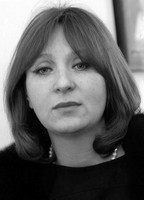Age- and gender-specifc adaptability and functionality rates of highly-skilled athletes
Фотографии:
ˑ:
Teoriya i praktika fizicheskoy kultury №10 2017, pp.72-74
PhD, Associate Professor S.V. Pogodina1
Dr.Med., Professor G.D. Aleksanyants2
1V.I. Vernadsky Crimean Federal University, Simferopol, Republic of Crimea, Russia
2Kuban State University of Physical Education, Sport and Tourism, Krasnodar
Series of tests were performed under the study to rate the adaptation processes in the key body systems of highly-skilled 16-46 year-old athletes (male and female) with application of immunological, biochemical, haematological, rheographic, spirographic and anthropometric methods; exhaled gas analysis; and workload tests to profile the age-specific variations of the athletes’ functionality, anthropometrical measurements and physicality to explain the natural reduction of the integrated bio-energy rates in the period of 37-46 years of age. The study data and analyses made it possible to find the age-specific changes in the bio-energy resources under specific loads, including: intensive production of lactic acid in the anaerobic-aerobic work modes in the 16-18 year-old and particularly 22-26-year-old athletes; and intensive production of lactic acid in the anaerobic-aerobic work modes in the 37-46 year-old athletes. The study found the following age-specific tensions in the adaptation process: unspecific responses at the relatively high activation level in the male age groups of 17-26 and 40-46 years; fall in the activation level in the male age group of 22-26 years; and the unspecific responses at the relatively high activation level in the female age group of 40-45 years. The study found the age-specific fast adaptation responses of the core body systems in the male group under high-intensity loads, including: growth in the hormonal-metabolic responses in the 17-18 year-old males; general growth of the adaptation responses of the core body systems in the 22-26 year-old males; and weakening of the ventilatory and metabolic responses in the 40-46 year-old males. Furthermore, the study found some chrono-biological regularities in the adaptation processes in the 16-45 year-old females including the high probability of detriment to the ovulatory and menstrual cycles at the age of 37-45 years; weakening of the hormonal responses in the inter-menstrual periods; and specific variations in the vegetative influences in the 37-45 year-old females with the anovulatory cycle and in the 16-26 year-old females with the ovulatory and menstrual cycles versus the hemodynamic and ventilator functions.
Keywords: highly-skilled athletes, gender specifics, adaptation processes, 16-46 year-old, age-specific changes, threshold physical loads.
References
- Gilmutdinov E.R., Epishev V.V. Osobennosti funktsionalnogo sostoyaniya kardiorespiratornoy sistemy u veteranov sporta v vozrastnom aspekte i pri razlichnom urovne dvigatelnoy aktivnosti [Age-related features of cardiorespiratory system functionality in sports veterans and in case of different levels of motor activity]. Vestnik Yuzhno-Uralskogo gosudarstvennogo universiteta. Seriya: Obrazovanie, zdravookhranenie, fizicheskaya kultura, 2010, no. 37 (213), pp. 19-22.
- Lipovka L.V. Osobennosti techeniya fertilnogo i klimaktericheskogo periodov u zhenschin-sportsmenok. Avtoref. dis. kand. med. nauk [Specific features of fertile period and menopause courses in female athletes. PhD diss. abstract]; RSMU publ.. Moscow, 2004, 20 p.
- Manuhin I.B., Gevorkyan M.A., Chagay N.B. Anovulyatsiya i insulinorezistentnost [Anovulation and insulin resistance]. GEOTAR-Media publ., 2006, 416 p.
- Carter J.R., Lawrence J.E. Effects of the menstrual cycle on sympathetic neural responses to mental stress in humans. J. Physiol., 2007, vol. 585, pp. 635–641.
- Christensen A., Bentley G.E., Cabrera R. et. al. Hormonal regulation of female reproduction. Hormone and Metabolic Research, 2012, vol. 44(8). P. 587-91.
- Eckberg D.L. Sympathovagal balance: a critical appraisal. Circulation. 1997, no. 96, pp. 3224-3232.
- Grishin O.V., Kovalenko Y.V., Grishin V.G. The variability of pulmonary gas exchange and respiratory pattern. Human Physiology, 2012, vol. 38, no. 2, pp. 194-199.



 Журнал "THEORY AND PRACTICE
Журнал "THEORY AND PRACTICE